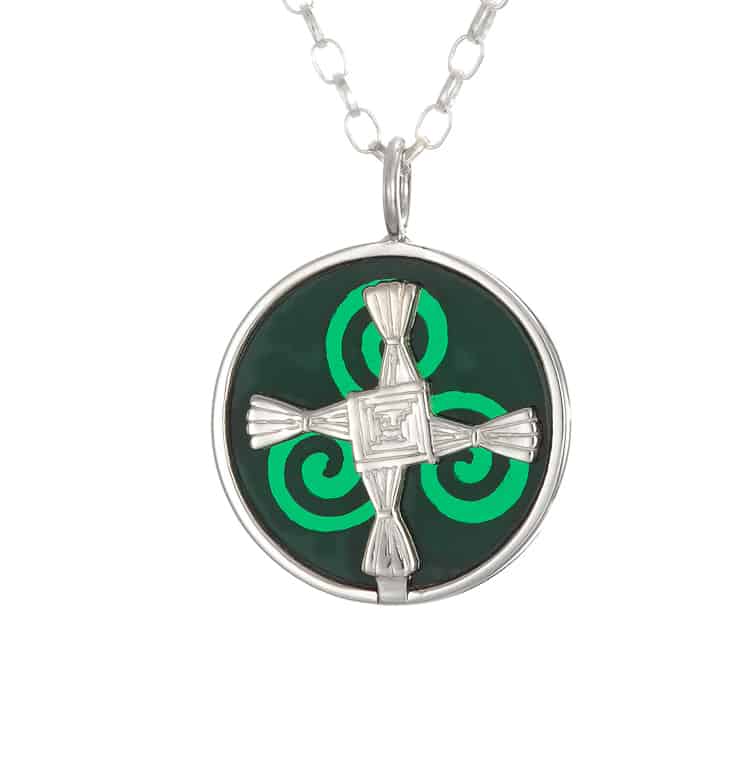No products in the cart.
Heritage
St. Brigid’s Day – Lá Fhéile Bhríde
The 1st of February celebrates St. Brigid, one of the patron saints of Ireland and was known also as a fertility goddess in Celtic mythology. There are many spellings for her name – Brigid, Bridget, Brigit, Brighid, Bríd, and Bride. The feast day co-incides with what was originally a pagan festival called Imbolc, marking the arrival of longer, warmer days and the early signs of spring. Imbolc means “in the belly” in old Irish (bolg is the Irish for stomach).
I was actually born on St. Brigid’s day and Bridget happens to be my middle name!! St Brigid was born in Faughart, a few miles from Dundalk in Co. Louth in the 5th Century (approx 450 AD). She lived during the time of St. Patrick and was inspired by his preachings and she became a Christian. She was very important in spreading Christianity in Ireland. Eventhough she was not from Kildare, she is often referred to as ‘Brigid of Kildare’, and was said to be the founder of several convents of nuns, including that of Kildare. It is said that this convent was built beside an oak tree where the town of Kildare now stands. Around 470 AD she also founded a double monastery, for nuns and monks, in Kildare and subsequently became the Abbess. The Abbey of Kildare became one of the most prestigious monasteries in Ireland, and was famous throughout Christian Europe.
As a child, I remember always making St. Brigid’s crosses from rushes at school and it is a joy to see this tradition continued in the Gaelscoil my children attend. It’s funny that I still remember being told that the rushes should be pulled and not cut. No idea why, mind you! Some believe that the crosses have the power to protect the owner’s home from harm. This is one of the reasons that the St. Brigid’s cross is loved by many. For many years, I’ve been asked to make a piece of jewellery incorporating the St. Brigid’s cross. Late last year, I finally got around to making a small collection to celebrate the saint and goddess and my connection to her.
There’s other traditions associated with St Brigid. It is thought that if you leave out a scarf or cloth the night before St. Brigid’s day, that it will bring an end to headaches and sore throats. Definitely worth a shot if you are struggling with colds and flus this winter!
St. Brigid died in AD 525 at the age of 75 and was buried in a tomb before the High Altar of her Abbey church. Many years later, her remains were exhumed and transferred to Downpatrick and put to rest with the two other patron saints of Ireland, St. Patrick and St. Columcille.

